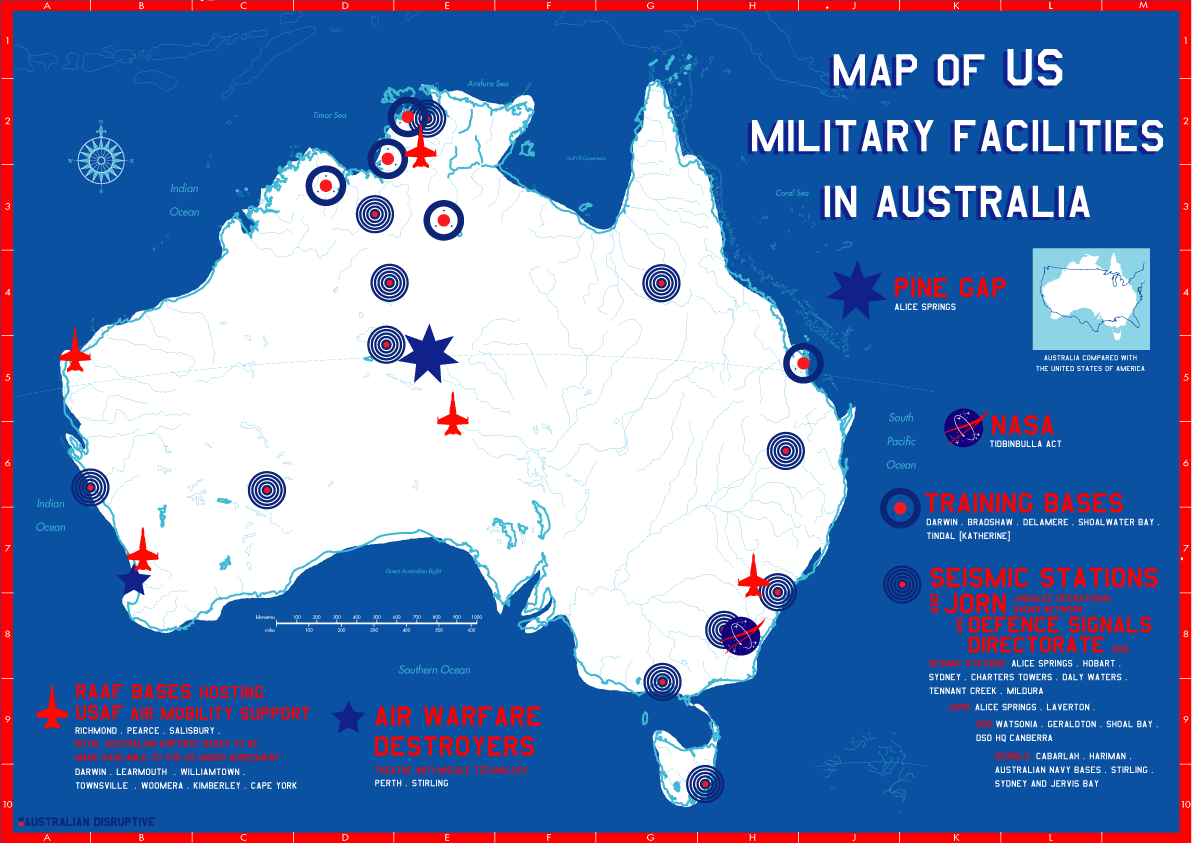
Australia To Spend $747 Million To Upgrade Bases Used by US to Expand Joint War Games
Rick Rozoff / Anti-Bellum
(April 30, 2021) — On April 28 Australian Prime Minister Scott Morrison announced that his government will apportion $747 million ($580 million American) to upgrade four military bases in the north of the country and to increase and expand war games with the US.
The funds used for the above purpose are part of military plans that envision the expenditure of $270 billion in the next ten years to improve what are described as long-range strike capabilities. $270 billion in a nation with a population of 25 million.
The steady, though largely unnoticed emergence of Australia as a regional and in many ways global military power over the past twenty years remains unacknowledged until a story like this one occasionally surfaces.
From military deployments to Fiji in 1987 (Operation Morris Dance), Timor-Leste in 2006 (Operation Astute) and Afghanistan after 2001 (where at one point Australia was the largest non-NATO troop contributor to the International Security Assistance Force) to the assignment of Australian naval vessels to US-led and NATO operations around the world, to being one of the first partners in the in the F-35A Lightning II project, Australia proves daily that it aspires to be a mayor military power.
The northern bases that will be modernized and expanded include an air field and the Matilda Lines at Robertson Barracks and the Royal Australian Air Force Base Darwin where a US Marine Corps Marine Air-Ground Task Force, named Marine Rotational Force-Darwin, is based. The first contingent of Marines was of 200 personnel; it is now close to its full complement of 2,500.
The Marines are rotated in and out to circumvent prohibitions against permanent foreign military deployments in the nation, though for the past decade the Pentagon has been present in Australia under whichever subterfuge Canberra chooses to employ.

In 2010 Secretary of State Hillary Clinton made an almost two-week tour of the Asia-Pacific region which ended in her joining Defense Secretary Robert Gates and Chairman of the Joint Chiefs of Staff Admiral Michael Mullen in Australia on November 8 to among other matters secure the use of the country’s military bases.
Clinton and Gates met with Australian Foreign Minister Stephen Smith and Defense Minister John Faulkner on November 8 for the 25th anniversary Australia-United States Ministerial (AUSMIN) meeting. (That is, a meeting of the foreign and defense ministers of both nations.)
At the time a local news report disclosed that “Australia has agreed to a major escalation of military co-operation with the US,” including “more visits by American ships, aircraft and troops and their forces exercising here regularly….”
“Access to Australian Defence Force facilities will allow the US to step up its military presence in the Asia-Pacific region…as concern grows about China’s military expansion.”
The Pentagon confirmed that it would deploy (or rotate) more military personnel to Australia, conduct more joint military exercises and secure access to several military installations. The latter would include army and air force bases at Townsville, the new Coonawarra naval base in Darwin, the Stirling naval base on Garden Island and the Bradshaw Field Training Area.
Australian Prime Minister Julia Gillard confirmed that her administration would “welcome the United States making greater use of our ports and our training facilities, our test-firing ranges.”
That is the genesis of the upcoming expansion of Australian military bases hosting American troops and hardware.
The year before, 2009, the Australian Department of Defence released a 140-page white paper called Defending Australia in the Asia Pacific century: force 2030 , which announced $72 billion in new military spending for an island nation of then barely 20 million inhabitants with no land borders and no immediate military threats confronting it.
The document detailed the Australian government’s plans to acquire and expand a full spectrum — air, sea and land — arsenal of advanced weaponry in the nation’s largest arms buildup since World War II. Plans which included replacing six submarines with double that amount possessing greater range and longer mission capabilities, “hunter-killer submarines”, representing “a big new investment in anti-submarine warfare”; three new destroyers “specialising in air warfare” and eight new frigates.

All of the above were planned to be equipped with land-attack cruise missiles with a range of up to 2,500 kilometers, almost certainly of the Tomahawk ground-launched cruise missile variety, which will make Australia “the first regional defence force to have the potent weapons system.”
The policy paper also called for the acquisition of 46 Tiger (German-French Eurocopter multi-role combat) helicopters, Hercules and other new generation military transport planes, 100 armored vehicles and 100 F-35 Lightning Joint Strike Fighters.
Australia has emerged as an American military outpost in the Asia-Pacific region and a formidable military power in its own right, one with “long-range strike capabilities.”
Rick Rozoff is a contributing editor at Antiwar.com. He has been involved in anti-war and anti-interventionist work in various capacities for forty years. He lives in Chicago, Illinois. He is the manager of Stop NATO. This originally appeared at Anti-Bellum.
Posted in accordance with Title 17, Section 107, US Code, for noncommercial, educational purposes.